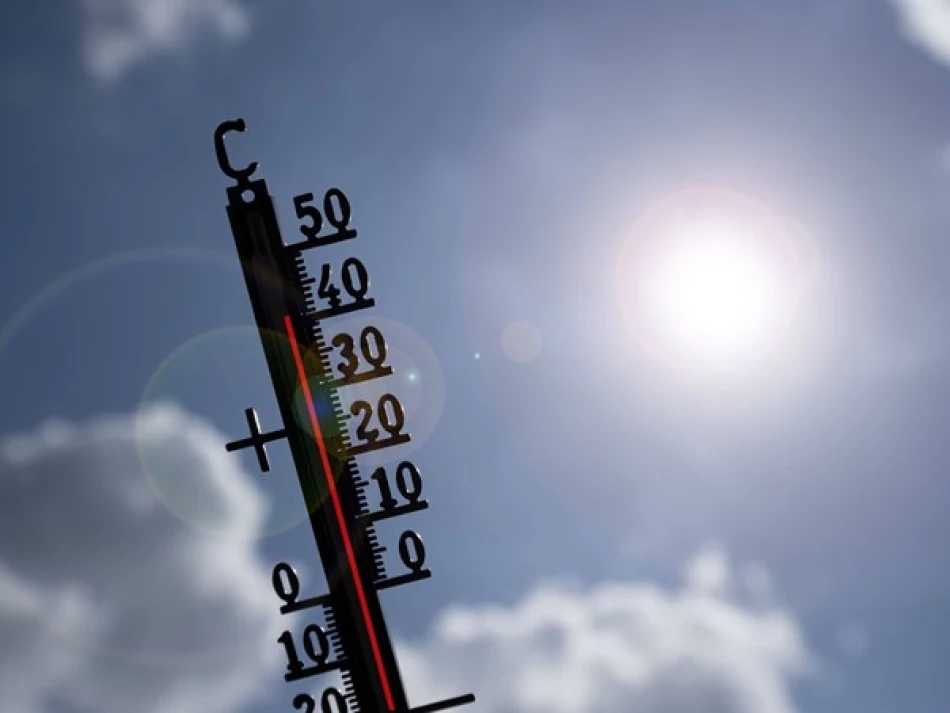
Scorching Heat Waves Pose Growing Threat to Human Lives, Experts Warn
Extended Heat Waves Now a Deadly Health Crisis, Not Just Summer Discomfort
The World Health Organization and climate health experts are sounding urgent alarms: prolonged heat waves have evolved from temporary inconveniences into life-threatening health emergencies. As record-breaking temperatures sweep across continents, the cumulative effects of sustained heat exposure are proving far more dangerous than previously understood, with deaths occurring days after heat waves begin due to the delayed impact on chronic health conditions.
The Hidden Killer: Delayed Health Impacts
The most insidious aspect of extended heat waves isn't the immediate dangers like heat stroke or severe dehydration. Instead, the greatest threat lies in the exacerbation of chronic diseases affecting the heart and respiratory system, which can manifest symptoms or lead to death several days after a heat wave begins.
French Health Minister Catherine Vautrin captured this delayed danger, noting that "the effect of heat on bodies doesn't necessarily appear at the same moment, so we must remain vigilant in the following days." This insight reflects a growing understanding among public health officials that heat-related mortality extends well beyond the obvious cases of heat exhaustion.
Scientific Evidence Points to Cumulative Damage
While scientific debate continues over the magnitude of cumulative effects, emerging research paints a concerning picture. A 2011 study in Epidemiology identified a "slight additional effect" after the fourth day of heat exposure, though a 2018 study in Science of the Total Environment downplayed the importance of heat wave duration.
However, 2024 research published in The Lancet Countdown and Sleep Medicine revealed a new dimension to heat-related health risks, describing rising temperatures as a "global threat to sleep." This sleep disruption weakens the body's ability to recover and cope with sustained thermal stress, creating a dangerous cycle of declining resilience.
Europe's Deadly Wake-Up Call: The 2003 Heat Wave Legacy
These findings inevitably recall the catastrophic summer of 2003, when a prolonged European heat wave claimed over 70,000 lives. That disaster marked a turning point in how public health authorities approach extreme heat events, leading to early warning systems and cooling center networks across the continent.
The 2003 tragedy demonstrated that heat waves function more like slow-moving natural disasters than weather events. Unlike earthquakes or hurricanes, their impact builds gradually, making it difficult for individuals and healthcare systems to recognize the mounting danger until casualties begin appearing.
Global Health Systems Under Pressure
The transformation of heat waves into prolonged health emergencies places unprecedented strain on medical infrastructure. Hospitals must now prepare not just for immediate heat-related admissions, but for sustained periods of elevated patient loads as chronic conditions worsen over multiple days.
This shift requires fundamental changes in emergency preparedness. Traditional heat response strategies focused on providing immediate relief through cooling centers and hydration programs. The new reality demands extended monitoring of vulnerable populations and proactive management of chronic disease patients before symptoms escalate.
Vulnerable Populations Face Compounded Risks
Elderly individuals, those with pre-existing cardiovascular or respiratory conditions, and people taking certain medications face exponentially higher risks during extended heat events. The cumulative stress on these populations means that each additional day of extreme heat significantly increases mortality risk, even when temperatures plateau rather than continue rising.
Climate Change Amplifies the Threat
As climate change accelerates, the frequency and duration of extreme heat events are increasing globally. What were once rare, week-long heat waves are becoming regular occurrences lasting two weeks or more in many regions. This trend transforms heat from a seasonal health concern into a persistent threat requiring year-round preparation.
The economic implications are staggering. Beyond direct healthcare costs, extended heat waves reduce productivity, strain energy systems, and force costly adaptations in urban planning and building design. Cities worldwide are investing billions in heat mitigation strategies, from increasing green spaces to retrofitting buildings with cooling systems.
The message from health experts is clear: societies must fundamentally reimagine their relationship with extreme heat. What previous generations viewed as uncomfortable weather has become a complex public health emergency requiring coordinated, sustained responses that extend well beyond the heat wave itself.
Most Viewed News

 Layla Al Mansoori
Layla Al Mansoori






